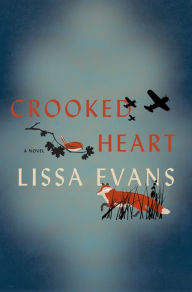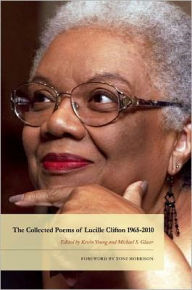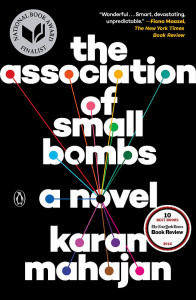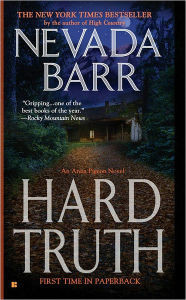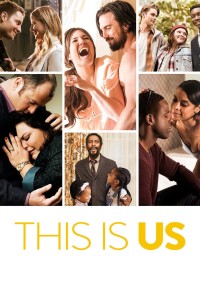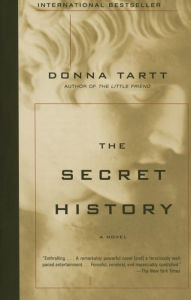
Tartt’s first novel begins with a quiet bang. I am no fan of prologues, but this one shows how powerful they can be. By mentioning a murder in the first sentence, this first section of the Introduction raises a huge story question and creates suspense that carries through the first half of the book. Tartt doesn’t stop there, but infuses each page with what Donald Maass, literary agent and writing guru, calls micro-tension. Sometimes it is out and out conflict and other times a vague sense of unease, but it is always there.
The prologue also immerses us in the voice of our narrator, Richard Papen, a young man from a working class family in southern California, who transfers to the fictional Hampden College in Hampden, Vermont.
Wanting to continue his Greek studies, Richard makes a huge effort to join the only Greek class. The professor, Julian Morrow, accepts students according to his own whim and then requires them to take all of their classes with him. One of Tartt’s strengths is her descriptions of people and places. With just a few phrases she conjures her characters.
It was a small, wise face, as alert and poised as a question, and though certain features of it were suggestive of youth—the elfin upsweep of the eyebrows, the depth lines of nose and jaw and mouth—it was by no means a young face, and the hair was snow white . . . He put his head to the other side and blinked again, bright-eyed, amiable as a sparrow.
Julian’s appeal for Richard is not only the entrée to an exclusive club, but also the image of Richard himself that Julian makes him believe in. Julian treats all of his students as serious scholars who care, not only about the language, but Greek culture itself, including its love of beauty and its attempt to balance Apollonian rationality with Dionysian ecstasy.
In this class, Richard joins the select few: Henry, brilliant and wealthy, the quiet leader of the group; Francis, also wealthy, prone to melodrama and attracted to men; the beautiful twins, Charles and Camilla, whose relationship is a clique within the clique; and Bunny, a narcissist from a destitute Brahmin family, who believes it is his right to take whatever he wants. Aristocrats all, they include Richard in their secret society, though he never feels entirely confident that he is one of them.
In this story of a middle-class youth fascinated by the beauty and nonchalant grace of his new aristocratic friends, I was immediately reminded of one of my favorite books: Brideshead Revisited. This novel has some of the charm of Brideshead, but lacks its serious underpinnings. Stretching over several decades, the Brideshead story embodies the massive cultural changes in Britain, asking what remains when so much has been stripped away. The Secret History, though, has the much smaller scope of a single school year and only addresses the coldness and carelessness of privileged youth.
While the prose was often entrancing, I felt that the book did not need to be so long. For example, the Christmas vacation section is one that could have been cut down. Richard’s situation, living in an unheated attic with a hole in the roof, and what followed taxed my credulity and threw me out of the story. The narrative function of that section, to bring Henry home and endear him to Richard, could have easily been achieved with a more believable way of giving Richard pneumonia.
The novel reminded me of Diana Gabaldon’s books which seem less like compelling stories and more like an opportunity to sink into another world. Luckily I was listening to it as an audio book, so my “reading” stretched out over a couple of long car trips and many walks. If I’d been trying to read it as a book, I would probably have grown tired of it by the middle, where we finally get to the murder.
That felt like a logical stopping place, but as it turns out, the rest of the book, which is about the aftermath, is interesting in a different way. We may have the answer to the question of how and why the murder happens, but now we wonder what its effect will be on these characters.
Richard, like similar narrators of other lives (Charles Ryder and Nick Carraway, for instance), speaks in a careful and thoughtful, almost detached, tone of voice, as though answering an oral exam question. He is looking back on these events from the advanced age of 28, hence the detachment. While it might seem that such a tone might be boring, I actually found it engaging and more effective than an emotional tone might have been. Repressed emotion, if done as well as it is here, gives the story more power.
Since the book was narrated by the author, I was disoriented by the sound of this southern California boy’s voice being so high and having an accent redolent of the deep South. The other characters being New Englanders were equally jarring. However, I eventually got used to Tartt’s voice and even found it soothing. It was so soothing, in fact, that I began putting on the sleep timer and listening to it as I fell asleep, which was always within a few minutes.
Some of the reviews on Goodreads indicated that the book was most popular among high school students, one even saying that fifteen was the best age to appreciate it. I can see that older teens and college students, being of an age with the protagonist, would take a special interest in it, but the deluge of praise and awards seem proof that it is equally popular among older adults.
However, I found it ultimately shallow. I was certainly as charmed as Richard by this coterie of people, their old-fashioned formal dress, their erudite conversation, and literary references. But none, except perhaps Henry, seemed to have gone beyond these superficial attributes.
Thus, unexpectedly, my reaction to this book reminds me again of Brideshead, where Anthony Blanche says that Sebastian, while undeniably charming, reminds him of “‘that in some ways nauseating picture of Bubbles. . . when dear Sebastian speaks it is like a little sphere of soapsud drifting off the end of an old clay pipe, anywhere, full of rainbow light for a second and then—phut! vanished, with nothing left at all, nothing.’”
What books have worked well for you as audio books? Do you have a favorite narrator?
